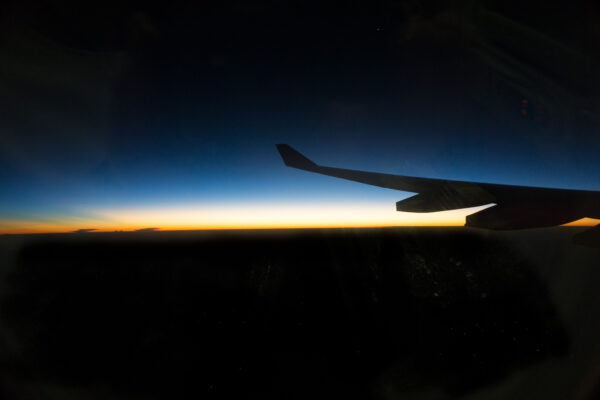
If you’re a nervous flyer, you probably don’t want to read about this. Possibly the worst aviation disaster in history almost happened earlier this month. An Air Canada aircraft landing at San Francisco airport aborted its approach at the last moment, narrowly missing four other passenger aircrafts preparing to take off.
The incident happened at night on July 7. Air Canada flight AC 759 was cleared to land on Runway 28R at San Francisco airport. The Air Canada pilot saw lights in front of him and asked the tower controller for confirmation. The tower controller confirmed he was cleared to land and that there was no one else on Runway 28R.
The problem was, the Air Canada aircraft, an Airbus A320, was not lined up for Runway 28R. The aircraft was instead lined up for Taxiway Charlie, where four other passenger aircrafts were lined up in a queue for take off. This taxiway is parallel and adjacent to the runway.
An unnamed pilot on the radio drew attention that the Air Canada aircraft was coming onto the taxiway. At the last moment, the tower controller instructed the Air Canada aircraft to “go around”, meaning to abort the approach.
The Air Canada aircraft was just 81 feet above the ground before it started climbing. By then, it had just narrowly missed United Airlines flight UA 1 by 69 feet, and Philippines Airlines flight PR 115 by 51 feet. The two flights were operated on a Boeing 787-9 and an Airbus A340-300 respectively, both large wide-bodied aircrafts.
Had the Air Canada aircraft continued its landing, it would have smashed into two United Airlines aircrafts, a Boeing 787-9 and Boeing 737-9, operating flight UA 863 and UA 1118 respectively.
No passenger and crew figures were available, but the collision of the three aircrafts could have involved well over 600 people, and this assumes the first two aircrafts on the taxiway escapes completely unscathed from any potential fallout. This incident could have surpassed the worst aviation disaster to date, the 563 fatalities from the Tenerife airport disaster in 1977.
It was originally thought that the Air Canada missed the first two aircrafts at 100 feet, but a latter reenactment by Mercury News shows that the miss was much closer. Given the speed of the landing aircraft, and the amount of fuel loaded on the two aircrafts waiting to take off, this collision would have been nothing short of catastrophic.
This incident is being investigated by authorities but it will take a while before an official report is out. The big question is how the Air Canada aircraft had come to be lined up for the taxiway.
Usually, it’s not the job of the tower controller to check that aircrafts are properly lined up for the runway they have been designated to land on. That responsibility falls entirely on the pilots in the aircraft. Good thing that the tower controller was quick enough to instruct the go around, averting the collision.
This was a really close call.
View Comment Policy